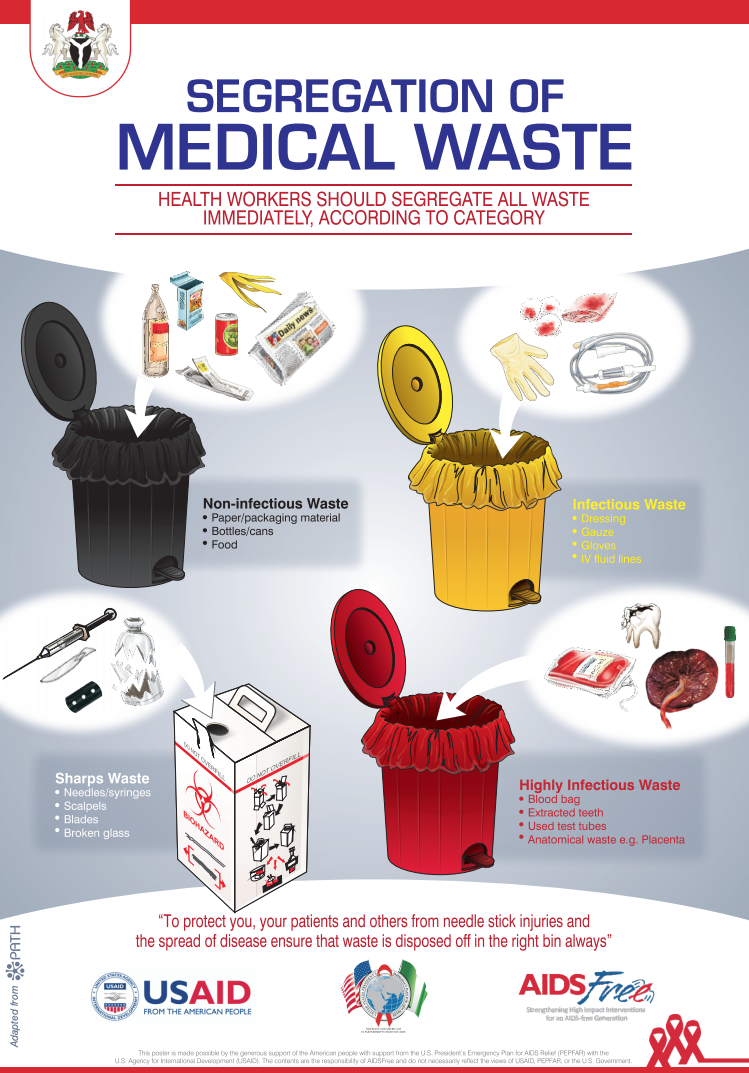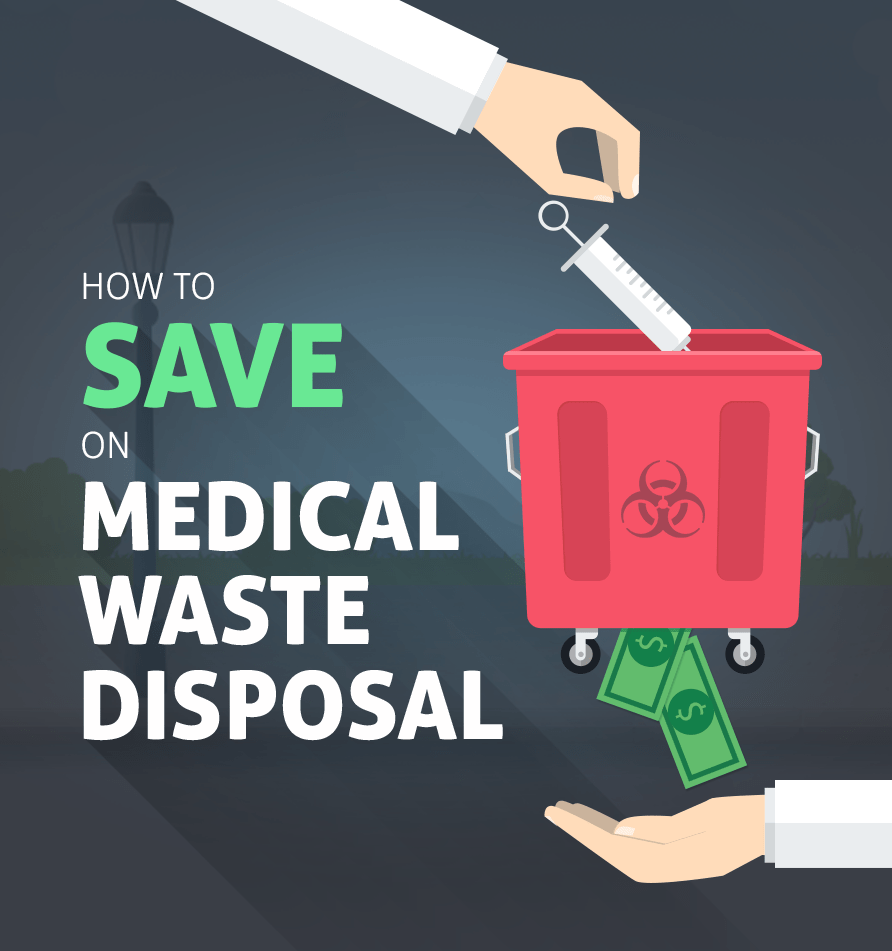Finest Practices for Medical Waste Monitoring
Medical waste monitoring is a critical aspect of medical care facilities' operations to make sure the security of patients, personnel, and the setting. Applying ideal techniques in clinical waste management is essential to reduce the dangers connected with dangerous waste. This consists of appropriate segregation and categorization of waste, guaranteeing its secure storage space and labeling, sticking to governing guidelines, and utilizing efficient disposal methods. By complying with these best methods, health care centers can decrease the potential for infections, injuries, and contamination caused by incorrect handling and disposal of medical waste. This introduction intends to give a summary of the value of ideal practices for clinical waste monitoring and the succeeding sections will certainly look into each technique carefully - medical waste disposal.

Partition and Categorization
In the field of medical waste monitoring, appropriate segregation and categorization are vital techniques for making certain the reliable and secure disposal of healthcare-related materials. Medical waste is created from different sources, consisting of hospitals, facilities, labs, and other medical care centers. It consists of a wide variety of things, such as needles, syringes, bandages, handwear covers, and pharmaceutical waste.
Partition includes the organized splitting up of different types of medical waste based on their features and potential risks. Sharps waste, such as blades and needles, should be placed in puncture-resistant containers to protect against injuries and the spread of contagious conditions.
Categorization is the process of identifying medical waste right into different classifications based on its possible dangers. These categories may include contagious waste, contaminated materials, pharmaceutical waste, and basic waste. By classifying waste, medical care centers can establish the suitable disposal approaches and ensure compliance with regional guidelines and standards.
Proper segregation and categorization of medical waste not only protect the health and safety of healthcare workers and the public but also contribute to the general performance and performance of waste administration. It lowers the danger of accidents, reduces environmental impacts, and advertises accountable garbage disposal methods.
Correct Storage Space and Labeling
To ensure the efficient and secure disposal of clinical waste, medical care centers should stick to appropriate storage space and labeling techniques. WasteX Medical Waste Disposal. Proper storage and labeling play a critical function in preserving the integrity of clinical waste monitoring systems and safeguarding the health and wellness of healthcare employees, clients, and the general public
When it comes to storage, it is crucial to have actually assigned locations especially created for various kinds of clinical waste. These areas ought to be safe, well-ventilated, and geared up with proper containers that satisfy regulatory criteria (medical waste removal). Partition and classification of waste must also be considered to prevent cross-contamination and prospective dangers

Normal tracking and examination of storage locations and containers are important to determine any concerns or offenses. Team should be educated on proper storage and labeling techniques, stressing the value of compliance with regulations and protocols.
Safe Transportation and Handling
Guaranteeing the protected and proper transportation and handling of medical waste is vital for preserving the integrity of waste monitoring systems and safeguarding the health and wellness of all involved. Medical waste, that includes items contaminated with contagious materials, drugs, and other harmful compounds, should be transferred in a manner that prevents leakages, spills, and prospective contamination.
It is important to utilize watertight and puncture-resistant containers that are specifically created for clinical waste. Furthermore, waste ought to be segregated based on its nature and type to prevent cross-contamination.
Throughout transportation, it is necessary to guarantee that waste containers are securely fastened and kept in a secure fashion. Vehicles utilized for carrying medical waste must be geared up with ideal safety features, such as spill control systems, to decrease the threat of any spills or leaks. Chauffeurs must receive training on correct handling and emergency situation feedback treatments to effectively address any unanticipated occurrences.
Moreover, the transport and handling of clinical waste must follow all appropriate laws and guidelines set forth by local, state, and government authorities. WasteX Medical Waste Disposal. medical waste disposal. Regular evaluations and audits should be conducted to analyze conformity and determine any type of areas for enhancement
Compliance With Regulatory Guidelines
Maintaining conformity with regulatory guidelines is important for efficient medical waste administration. These guidelines are established to shield public health and the atmosphere by making certain that clinical waste is properly taken care of, treated, and disposed of. Compliance with regulatory guidelines aids to avoid the spread of transmittable conditions, minimize possible threats, and minimize the overall impact of medical waste on the setting.
To attain conformity, medical care facilities need to remain informed regarding the details regulations regulating clinical waste monitoring in their jurisdiction. These policies might differ from country to country, and also within different states or regions. It is essential for health care centers to have a thorough understanding of these guidelines and to apply ideal approaches and procedures to guarantee compliance.
One trick facet of conformity is the correct segregation and labeling of various sorts of medical waste. This includes dividing sharps from various other waste, along with categorizing waste based on its potential dangers. Health care centers should likewise make certain that medical waste is saved in ideal containers which these containers are appropriately labeled and sealed.
In addition, compliance with governing guidelines requires health care centers to establish correct training and education and learning programs for team member associated with medical waste management. This consists of supplying training on waste segregation, handling, and disposal procedures, in addition to the appropriate use of individual safety tools.
Normal tracking and audits are also vital to guarantee continuous compliance with regulatory standards. This involves conducting routine inspections of waste storage space locations, documenting waste management treatments, and preserving records of garbage disposal.
Efficient Disposal Techniques
Healthcare centers need to utilize effective disposal methods for proper monitoring of clinical waste. Inappropriate disposal of medical waste can present major health and ecological risks. There are numerous techniques that can be used to efficiently take care of clinical waste, making sure the security of healthcare employees, people, and the general public.
One commonly used approach is incineration. Burners can safely burn clinical waste at heats, lowering the volume and ruining any potentially harmful microorganisms. Incineration can be costly and might release dangerous toxins right into the air if not appropriately managed.
An additional approach is autoclaving, which includes subjecting the waste to why not try here high-pressure steam. This process kills microorganisms, viruses, and various other microorganisms, making the waste secure for disposal in routine waste streams. Autoclaving is a reliable and ecologically pleasant approach, but it calls for specialized devices and trained workers.
Chemical disinfection is likewise utilized in many cases, where liquid chemicals are related to the waste to disinfect it. This technique is much less commonly utilized because of concerns about the performance of chemical sanitation and the capacity for chemical residues to infect the environment.
Along with these methods, medical care facilities must also execute appropriate segregation, packaging, and labeling of medical waste to guarantee its safe handling and disposal. Routine training and education of staff on correct waste monitoring techniques are essential to keeping efficient disposal methods.
Conclusion
To conclude, applying ideal practices for medical waste monitoring is essential for ensuring the security of healthcare workers, individuals, and the environment. By effectively categorizing and segregating waste, saving and labeling it correctly, making sure secure transport and handling, adhering to governing guidelines, and employing effective disposal approaches, medical care facilities can efficiently manage and minimize the threats connected with clinical waste. It is vital for health care organizations to stick and prioritize to these best practices to keep a risk-free and sustainable healthcare environment.
Clinical waste administration is an essential facet of health care facilities' operations to ensure the safety and security of patients, team, and the setting. Executing best techniques in clinical waste administration is vital to reduce the risks associated with unsafe waste. These classifications may consist of contagious waste, harmful waste, pharmaceutical waste, and basic waste.In final thought, executing best techniques for clinical waste management is essential for ensuring the safety and security of healthcare workers, patients, and the environment. By properly setting apart and classifying waste, saving and identifying it correctly, ensuring risk-free transport and handling, complying with regulative standards, and utilizing reliable disposal techniques, healthcare facilities can properly handle and minimize the threats associated with medical waste.